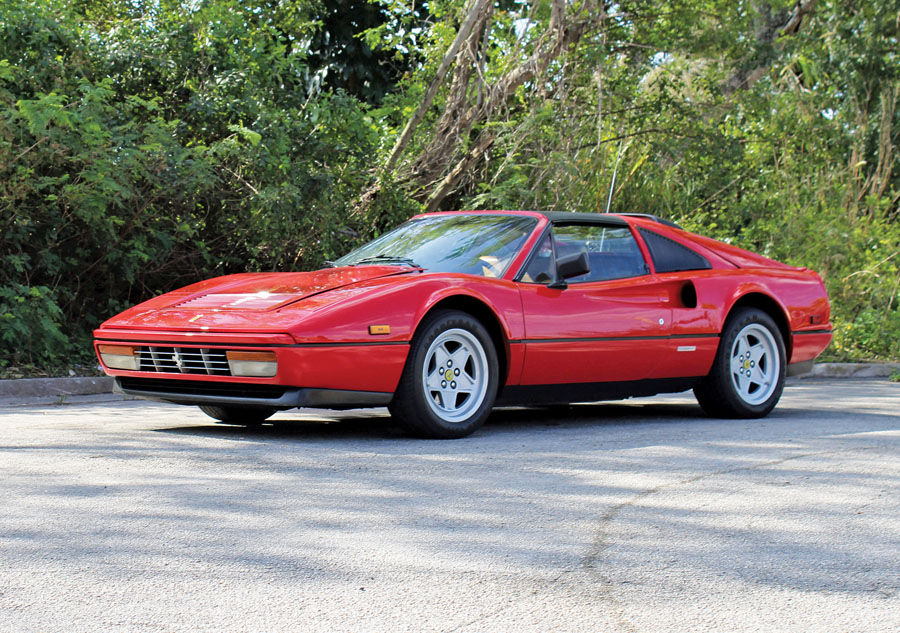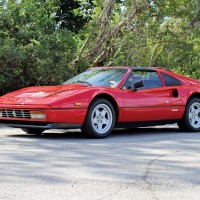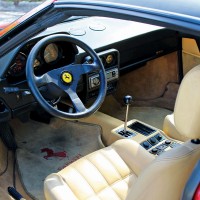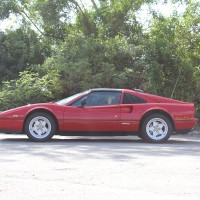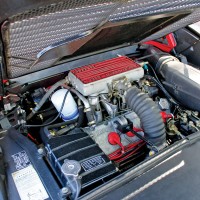SCM Analysis
Detailing
| Vehicle: | 1986 Ferrari 328 GTS |
| Years Produced: | 1985–89 for the European market, 1986–89 for the U.S. market |
| Number Produced: | 6,068 328 GTS plus 1,344 328 GTB |
| Original List Price: | $73,200 |
| SCM Valuation: | Median to date, $80,800; high sale, $192,500 |
| Tune Up Cost: | $4,500 |
| Distributor Caps: | $200 (reproduction — needs two) |
| Chassis Number Location: | Top right frame rail in the engine compartment |
| Engine Number Location: | In the middle of the V on the clutch end |
| Club Info: | Ferrari Club of America |
| Website: | http://www.ferrariclubofamerica.org |
| Alternatives: | 1986 Porsche 911 Targa, 1986 Lotus Turbo Esprit, 1995 Acura NSX, 1988 Lamborghini Jalpa, 2005 Viper SRT-10 convertible |
| Investment Grade: | B |
This car, Lot 563, sold for $64,900, including buyer’s premium, at the Auctions America sale in Fort Lauderdale, FL, on April 2, 2016.
The Ferrari 328 long carried a reputation as too small, too slow and too expensive to service.
But if you ask most owners, the 328 is the best sports car they’ve ever owned.
While 328s were positioned as the baby brother of the mighty Testarossa, the 328 is a far more enjoyable car for the majority of drivers. They were popular when new and have enjoyed a healthy following. The model recently celebrated its 30th birthday, and a generation that deferred purchasing one until the nest was empty is now buying — and heating up the market.
Ferrari’s immensely popular V8 series didn’t start off as smoothly as may be thought today. Despite the fact that Ferrari won world championships with several non-12-cylinder cars, Ferrari enthusiasts at the time felt real Ferraris had 12-cylinder engines. The new 8-cylinder cars didn’t make their cut.
Winning over the skeptics
The series was introduced with the 308 GT4, a Bertone-designed 2+2. This was Bertone’s first production car for Ferrari, and the angular lines were a shocking departure from the Pininfarina curves seen on most Ferraris. The GT4 was a tough sell, with odd-color new cars languishing in distributors’ warehouses for as much as two years. They are very comfortable, especially great drivers and arguably attractive, although it has only been in the past couple of years that these attributes have been rewarded with any monetary value.
The 308 GTB of 1976 won over the Ferraristi. Pininfarina’s take on the V8 model was a sensual, low-profile, 2-passenger berlinetta. The silhouette resembled a Coke bottle on its side, and it was every bit as perfect. It was a car to lust for, and all but the most diehard 12-cylinder fans wanted one.
A targa-top GTS model was soon added, and Ferrari was off on a wild ride. Most of the subsequent V8 models broke sales records and today it’s hard to imagine that V8 Ferraris were once considered illegitimate children.
Happily taking the fifth
The 328 is the fifth generation of Ferrari’s V8 series. The evolution brought more displacement, dependable Bosch fuel injection, electronic ignition, improved air conditioning and modern paint to the series.
The cars also had an improved suspension, lighter clutch and easier shifting. Better performance and exceptional reliability accompanied the updates. The early 308s that were best enjoyed by a serious enthusiast became the 328 that was a real alternative to a Porsche 911 or a Mercedes SL.
Mechanical improvements were paired with cosmetic updates. For the 328, the delicate profile of the 308 was altered with modern, body-colored bumper covers replacing the big black rubber bumpers of the 308. This gave the 328 a distinctive look that instantly differentiates it from a 308. The interior was similarly updated to look more modern.
The most reliable Ferrari
A 328 is an excellent first Ferrari. They are the most reliable Ferraris ever built. They are exciting drivers — with enough power to get you in trouble and a chassis that’s more than up for the task.
Timing belts last for five years and can be changed for under $2,000. A proper major service will run substantially more. The stock sound won’t impress the boy racers, but adults appreciate that you can have a conversation at 70 mph with the top off.
Phil Hill compared the 328 to a Testarossa, a 288 GTO and a Mondial for a Road & Track column. He noted, “And when you consider the 328 in total, it is the best overall Ferrari if your purpose is to live with it.” That mirrors my feelings exactly.
Some parts are unobtainium
Everything necessary to keep a 328 going down the road is readily available, but trim parts are getting scarce. A few parts, such as the driving-light assembly and some interior pieces, are simply not available anywhere at any price.
For those items, you put your name on the waiting list at a recycler and keep sending them pizzas to remind them to call you first when one becomes available.
Start your checkbooks
A close proximity to South America and a Latin-friendly culture attracts wealthy South Americans to South Florida.
Brazil’s economy has tanked in the past few years, and our subject car was the property of a Brazilian collector who brought 25 cars to the Auctions America auction. We’ve seen several South American collectors decide that counting cash makes more sense than collecting cars. The cash of choice is American dollars, so Florida auctions are their venue of choice.
A new generation of buyers has started to chase Ferraris. Few can afford the classic models — and most don’t even care about them. Like the baby boomers who lusted for muscle cars, this generation is more interested in the cars of their youth than old 12-cylinder models. 308s, 328s, and Testarossas are on their shopping list.
This added demand on a limited supply is shaking up prices in what was once a very stable market.
A blink of an eye ago, this would have been a $40,000 car. Those days are over. 308s and 328s regularly break the $100,000 mark, and one 328 actually broke $300,000.
These high prices are exclusive to exceptional cars with low mileage and in near-new condition. Our subject car was an unremarkable first-year car with nearly 45,000 miles. There was no mention of service history, so one must assume it’s needed.
It’s a rising market, but the seller didn’t get the windfall he might have expected. This was an average car that sold for average money. Everyone should go home happy. ♦
(Introductory description courtesy of Auctions America.)
